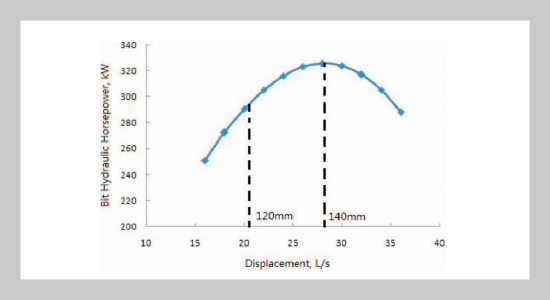REFERENCES
- [1] Kheshti, M., Kang, X. N., Song, G. B. and Jiao, Z. B., “Modeling and Fault Analysis of Doubly Fed Induction Generators for Gansu Wind Farm Application,” Canadian Journal of Electrical and Computer Engineering, Vol. 38, No. 1, pp. 5264 (2015). doi: 10.1109/ CJECE.2014.2359682
- [2] Sreerama K. R. and Chandrasekharan, E., “A Parallel Distributed Computing Framework for Newton-Raphson Load Flow Analysis of Large Interconnected Power Systems,” International Journal of Electrical Power and Energy Systems, Vol. 73, pp. 16 (2015). doi: 10.1016/j.ijepes.2015.03.020
- [3] Favoino, F., Overend, M. and Jin, Q., “The Optimal Thermo-Optical Properties and Energy Saving Potential of Adaptive Glazing Technologies,” Applied Energy, Vol. 156, pp. 115 (2015). doi: 10.1016/j.apenergy. 2015.05.065
- [4] Liu, F. J. and Chang, T. P., “Optimizing the Tilt Angle of Solar Collector under Clear Sky by Particle Swarm Optimization Method,” Journal of Applied Science and Engineering, Vol. 18, No. 2, pp. 167172 (2015). doi: 10.6180/jase.2015.18.2.09
- [5] Ramasamy, M. and Tangavel, S., “Optimal Utilization of PV Solar System as DVR (PV-DVR) for a Residence or Small Industry,” Journal of Applied Science and Engineering, Vol. 16, No. 3, pp. 295304 (2013). doi: 10.6180/jase.2013.16.3.09
- [6] Dangayach, S., Singh, D. N., Kumar, P., Dewri, S. K., Roy, B., Tandi, C. and Singh, J., “Thermal Instability of Gas Hydrate Bearing Sediments: Some Issues,” Marine and Petroleum Geology, Vol. 67, pp. 653662 (2015). doi: 10.1016/j.marpetgeo.2015.05. 034
- [7] Yue, W. T. and Wang, J. Y., “Feasibility of Waterflooding for a Carbonate Oil Field through Whole-Field Simulation Studies,” Journal of Energy Resources Technology, Transactions of the ASME, Vol. 137, No. 6, pp. 18 (2015). doi: 10.1115/1.4030401
- [8] Mashaba, V. and Altermann, W., “Calculation of Water Saturation in Low Resistivity Gas Reservoirs and PayZones of the Cretaceous Grudja Formation, Onshore Mozambique Basin,” Marine and Petroleum Geology, Vol. 67, pp. 249261 (2015). doi: 10.1016/j.marpetgeo. 2015.05.016
- [9] Harris, O. O. and Osisanya, S. O., “Evaluation of Equivalent Circulating Density of Drilling Fluids under High-Pressure/High-Temperature Conditions,” The 2005 SPE Annual Technical Conference and Exhibition, Dallas, U.S.A., pp. 110 (2005).
- [10] Guan, Z. C., Chen, T. G. and Liu, X. S., “Review of Studies of PDC Bit Hydraulic Configurations,” Journal of the University of Petroleum, China, Vol. 16, No. 6, pp. 136142 (1994).
- [11] Bailey, W. J. and Peden, J. M., “A Generalised and Consistent Pressure Drop and Flow Regime Transition Model for Drilling Hydraulics Suitable for Slimhole, Underbanlanced and Horizontal Wells,” The 1997 SPE/ IADC Middle East Drilling Technology Conference, Bahrain, pp. 279296 (1997).
- [12] Nguyen, D. and Rahman, S. S., “A Three-Layer Hydraulic Program for Effective Cuttings Transport and Hole Cleaning in Highly Deviated and Horizonta1 Wells,” The 1996 IADC/SPE Asia Pacific Drilling Technology, Lumpur, Malaysia, pp. 163173 (1996).
- [13] Patel, A., Chaudhari, R. and Deendayal, P., “Optimization of Well Hydraulics for Riserless Deepwater Drilling Operations under High Temperature and High Pressure Environment,” SPE Annual Caspian Technical Conference and Exhibition, Astana, Kazakhstan, pp. 115 (2014).
- [14] Kuru, E., Okunsebor, O. M. and Li, Y., “Hydraulic Optimization of foam Drilling for Maximum Drilling Rate in Vertical Wells,” SPE Drilling & Completion, Vol. 20, No. 4, pp. 258267 (2005).
- [15] Andersen, H., Vigrestad, A. and Kuru, E., “Hydraulic Optimization of Aerated Mud Drilling for Maximum Drilling Rate,” IADC/SPE Managed Pressure Drilling and Underbalanced Operations Conference and Exhibition, San Antonio, Texas, pp. 115 (2009).
- [16] Aadnoy, B. S., “A New Method for Hydraulic Optimization,” Society of Petroleum Engineers of AIME, Vol. 1991, pp. 114 (1991).
- [17] Lim, K. M. and Chukwu, G. A., “Bit Hydraulics Analysis for Efficient Hole Cleaning,” Western Regional Meeting, Anchorage, Alaska, pp. 171184 (1996).
- [18] Zoellner, P., Thonhauser, G., Lueftenegger, M. and Spoerker, H. F., “Automated Real-time Drilling Hydraulics Monitoring,” SPE/IADC Drilling Conference and Exhibition, Amsterdam, Netherland, pp. 110 (2011).
- [19] Wright, J. and Chukwu, G. A., “An Economic Appraisal of Hole Cleaning Using Hydraulic Horsepower and Jet Impact Force,” SPE western Regional/AAPG Pacific Section Joint Meeting, Long Beach, California, pp. 114 (2003).
- [20] Sun, M. G. and Peng, J. S., “Development of Petroleum Drilling Equipment at Home and Abroad,” Petroleum Drilling Techniques, Vol. 36, No. 6, pp. 8691 (2008). doi: 1001-0890(2008)06-0086-06
- [21] Zeng, X. C., Song, Z. G., Huang, Y. H. and Pu, R. C., “Presence and Application of Large Power Drilling Pump,” Oil Field Equipment, Vol. 43, No. 9, pp. 5659 (2014). doi: 1001-3482(2014)09-0056-04
- [22] Miu, X. C., ZY3NB-1600 Drilling Pump Research, Master’s Dissertation, Southwest Petroleum University, Chengdu, China (2005).
- [23] Chen, T. G. and Guan, Z. C., Drilling Engineering Theory and Technology, Petroleum University Press, Dongying, pp. 143164 (2000).
- [24] Information on http://www.doc88.com/p-5156822413 603.html
- [25] Ma, L. M. and Zhang, W. L., “The Development of Petroleum Drilling Technique and High Horsepower Mud Pump,” Oil Field Equipment, Vol. 29, No. 3, pp. 15 16 (2000). doi: 1001-3482(2000)03 -0015-02
















